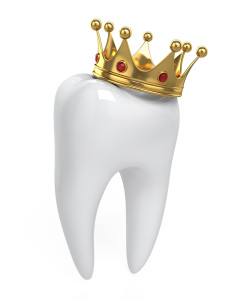
 When choosing a material for your new crown, it can be extremely confusing. There are three different options that Dr. Malcomson may recommend, each having pros and cons.
When choosing a material for your new crown, it can be extremely confusing. There are three different options that Dr. Malcomson may recommend, each having pros and cons.
Let’s consider the issues that a Patient will want to review as you make an informed decision:
- How much of my tooth will be removed? When a Patient has a crown placed on a tooth, it is often going to require the decayed part of the tooth to be removed. Dr. Malcomson may also remove some of the upper area of the tooth – known as the crown – in order for your new lab made crown to be fitted properly.
- Can a crown be used on all teeth? Some crowns are meant to be used for molars or “back teeth.”
- Will it look natural? Though esthetics should be a secondary consideration, the Patient will be the one wearing the crown for many years and you do need it to give your smile the appearance you desire. Ask Dr. Malcomson about the esthetics of the different crown options.
What are my options?
- Gold is the most conservative in terms of the alterations to the tooth, and gold is a very “mouth friendly” material. It requires the least amount of tooth to be removed, is a material that never fractures and is extremely “biocompatible” in the mouth ( as well as to the tooth). However, it is gold in color and this means it stands out from the surrounding white teeth, making it most suitable for back teeth.
- Porcelain fused to metal is the same as a your tooth. This also has the benefit of adding strength thanks to the metal base. Unfortunately, more of the tooth structure needs to be removed and it is not impervious to breaking or chipping. The design can also allow for the dark area of metal to be seen at the gum line.
- Porcelain is quickly becoming the most common material used for dental restorations involving a crown due to its great esthetics. However, it may not offer the best solution. It is necessary for a lot of the natural tooth to be removed and porcelain is a material that can fracture. However, it is the most versatile and can be used for the restoration of any tooth, without giving itself away as a crown.



